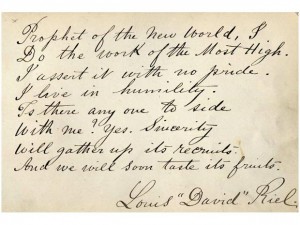During my first reading, Thomas King’s Green Grass Running Water immediately reminded me of two other literary works: Thomas Pynchon’s Crying of Lot 49, and Harry Robinson’s story, “Coyote Makes a Deal with King of England”, which we read for our last unit. It reminded me of Pynchon’s novel for more superficial reasons: both novels are embedded with allusions on every page—historical, cultural, mythological, pop culture related, etc. The fact that both stories are interwoven with other stories illustrate the idea that stories are not autonomous entities. As for Robinson’s story and King’s novel, both stories emphasize the multiplicity of truths, stories, histories—that there are no singular or universal voice that construct them. Like Robinson’s story, King demands multiple voices in his storytelling.
After reading through Dr. Paterson’s Lesson 3.2 notes, my understanding of “narrative decolonization” is the rebellion against colonial narratives through the manipulation (or revision) of dominant colonial narratives. This is a complex concept, and a challenging novel, so I wouldn’t be surprised if I misinterpreted both writers’ intent. However, the experience of reading and combing through this novel was extremely enriching, and I am more than willing to make the attempt at solving this puzzle. At this point of the course, there is nothing I resonate more than this quote from one of our professor’s blog posts: “. . . now I know there are many other ways of coming to knowledge and the urge to dichotomize is a Western way of knowing, it is not universal, not natural or human nature: it is ‘our nature’. The same can be said for the desire to establish universal categories” (Paterson). Keeping this in mind, I will discuss the acts of narrative decolonization King is doing with Green Grass Running Water.
King uses numerous narratives of domination and conquest: “European American origin stories and national myths, canonical literary texts, and popular cultural texts” (Paterson). There are the biblical references to the creation story, Adam and Eve, Noah’s Ark, and the biblical, omniscient God. There are the references and “adaptations” of Moby Dick, Robinson Crusoe, Lone Ranger; though I am skeptical about using the word “adaptation” since it can establish the hierarchy of origins between the stories and characters.
In Green Grass Running Water, King completely disregards the narrative tradition of using a linear narrative, a narrative arch, or a singular narrator/voice to tell his story about these characters. There is also not a singular narrator, protagonist or hero/heroine in the story. For me, this echoes Robinson’s story about the Coyote that stories and histor(ies) cannot be constructed by a singular voice/perspective/character, which I have briefly discussed in a previous blog post. And because of this necessity of acknowledging a multiplicity of voices and lives, a universal truth could never be possible. I think that what King is trying to establish here is that there is not only no universal truths between the binary voices of the colonizers and the oppressed, but also that there are different voices, communities, and lives within the colonized. As “I says” states to Coyote in the last section of the novel: “[t]here are no truths Coyote . . . Only stories.” (King 391). And this might be a good place to add that although there’s a “I” in the novel, the I is not the narrator because “I” is portrayed as another character, and not the narrator of the story. An evidence of this is that King writes “I says” and not “I say”. This is not only a rebellion against the traditional English grammatical rules, but also reiterates that every “I” (and ultimately, each of us) is just another character in a story, just another piece in the puzzle (the puzzle being the truth and the world we live in). That “I” is no different from the self-proclaimed GOD in the novel who tries (and fails) to establish himself as the authority of truth, because no one is the proprietor of truths.
Moving forward, let me attempt to dissect how the four old Indians act as another form of narrative decolonization. At first glance, they seem like characters that are made up of contradictions, and they are. However, just like many other parts of the novels, King is not trying to create contradictory subjects, but simply that, that is what stories and truths are made up of—multiple pieces of truths and stories (which at times, disagree with one another). In the story, the four Indians, sometimes referred by other characters as the “four old Indians”, are Robinson Crusoe, Lone Ranger, Hawkeye, and Ishamel. These four characters, whose names are more widely known from their English canonical literary texts, are not only not Indians in their “original” stories, but they come from stories that have oppressive portrayal of Indians. In King’s story, they make up one of the three distinctive narrative threads in the novel, and are the escaped patients from the mental institutions run by Dr. Joe Hovaugh. One one hand, King’s characterization of these four characters could be a portrayal of how this oppressive fictional characters (who also saw themselves as saviours of the world) belonged in “mental institutions”, challenging the mental and intellectual capacity of colonial oppressors. On the other hand, this portrayal could symbolize how these four Indian figures have been driven to a mental institution in the first place as a result of colonization and the a lifetime of being indoctrinated with colonial narratives of domination and conquest.
When King disregards the linear narrative tradition, he also disregards western literary tradition of telling stories with a traditional dramatic structure. The story ignores elements of literary structures such as climax, conclusion, denouement. Instead, he employs a circular storytelling method, where the story ends where it initially began. More distinctively, the various narrative threads in Green Grass Running Water starts off separately and merges and diverges again throughout the story. The story flows like running water. For instance, while the four Indians’ narrative thread started off as its own chapter, the storyline merges in the forth volume as the four characters join the Alberta narrative, during Lionel’s birthday. By manipulating the western narrative traditions, King is in a way taking ownership and control of the colonization that has been done unto him—an act of decolonization through narrative construction.
In the story, Alberta’s family while crossing the border, are robbed of their sun dance head dresses by the American custom authorities, and these sacred items were also later found to have been trampled upon by those in charge. This type of incidences are common forms of colonial violence the federal governments inflict on the Native communities, in both the states and Canada. And this is where another act of narrative decolonization comes in in King’s novel. Just as the sacredness of their traditions have been mocked and trivialized, King satirizes cultural artifacts and religious beliefs, which can be found in canonical western literary texts, and the biblical creation story respectively, that are deemed as sacred from the colonial perspectives. There is Moby Jane, who is the gender subverted character of the canonical Moby Dick. And in the reference to the Adam and Eve story in Paradise, King takes a satirical spin on it: “That would be nice, says First Woman, and all sorts of good things to eat fall out of that Tree. Apples fall out. Melons fall out. bananas fall out. Hot dogs. Fry bread, corn, potatoes, Pizza. Extra-crispy fried chicken” (King 40). These are examples of how King revises and disturbs the sacredness the various symbols in colonial texts, and myths, to reflect how Native traditions have been abused by colonial domination.
In the opening of this blog post, I write that I’m approaching this text as a puzzle, but I must correct myself. If Green Grass Running Water is really a puzzle, it would not be a two-dimensional one. It would be a three or four dimensional puzzle that is made up of pieces, and threads of different materials, lengths, and colours, one that interweaves infinitely.
-Kayi Wong
Works Cited
Continue reading →

